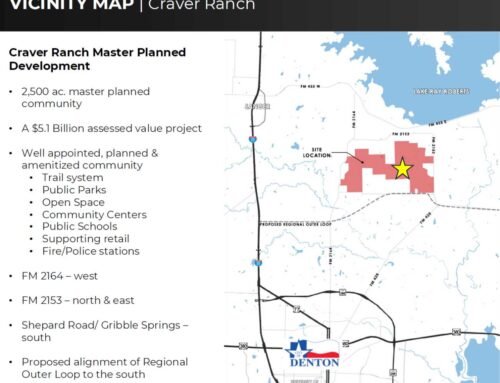Thousands of Denton County residents endured power outages, water outages and other hardships during the past week. Dozens of people have died across the state due to weather-related events, and the federal government has declared Texas a national disaster. The sad part is that the power outages and rolling blackouts leading to loss of life and untold economic damage was largely a preventable, man-made disaster. All the warning signs were there, but the warnings were ignored, and many power generators brushed off the risk of a major winter event in Texas’ loosely regulated electricity market.
The Texas power grid failure is now readily apparent for every resident of Texas to see. After several decades with ERCOT and our experiment with deregulated electricity, it remains to be seen what Texas legislators will do to correct obvious electric grid deficiencies. The finger pointing in Austin is likely going to be frantic as the fallout continues to be assessed. Governor Abbot, former governor Rick Perry and others in the largely conservative-controlled Texas legislature were quick to call out renewable energy as the culprit for the power failures in Texas. The truth is much more damaging.
The truth is that our leaders failed us miserably. From Austin to ERCOT to the power companies, it was a massive multi-year undertaking to set the stage for what will be surely remembered as a major disaster in the history of Texas.
Starting with Austin, it is the height of hypocrisy for government officials to try to blame frozen windmills for the loss of life and billions in economic damage when the majority of the states electricity is still generated by fossil fuels. Natural gas is still the largest source of electricity generation in Texas, and Denton County is no different. 2020 figures from the Electric Reliability Council of Texas ERCOT confirm that natural gas is responsible for 40 percent of the electricity generation in Texas. Coal comes in 3rd behind the growing wind component in Texas. Texas’ continued reliance on fossil fuels is common knowledge, but those facts didn’t get in the way of some ridiculous anti-regulatory spin from Texas politicians. Former governor, Rick Perry, even suggested many Texans would be willing to go without power to keep federal regulators out of the state’s power grid. Ted Cruz was eager to help, jumping on a plane to Cancun to weather out the storm with his family in a more tropical setting, while millions of Texans were without power or water.
That’s pretty ripe considering federal regulators warned Perry and his conservative minded colleagues in Austin about the potential risks to the Texas power grid back in 2011. The Federal Energy Regulatory Commission and the North American Electric Reliability Corporation prepared a detailed report on the major 2011 winter event in the Southwest which also affected Texas. The 357 page report on ‘Outages and Curtailments During the Southwest Cold Weather Event Feb 1-5’ provided the necessary framework for Texas leaders and power companies to take action so they could mitigate the damage from a major winter storm like the one we just experienced in Texas.
The warnings and recommendations from FERC were pretty clear in 2011. Texas needed to do a better job winterizing plants and equipment to prepare for a major cold weather event.
“The February event underscores the need to have sufficient black start units
available, particularly in the face of an anticipated severe weather event. In
ERCOT’s case, for instance, nearly half of its black start units were either on
scheduled outage at the time of the event or failed during the event itself,
jeopardizing the utility’s ability to promptly restore the system had an
uncontrolled, ERCOT-wide blackout occurred.
The majority of the problems experienced by the many generators that
tripped, suffered derates, or failed to start during the event were attributable, either
directly or indirectly, to the cold weather itself. For the Southwest as a whole, 67
percent of the generator failures (by MWh) were due directly to weather-related
causes, including frozen sensing lines, frozen equipment, frozen water lines,
frozen valves, blade icing, low temperature cutoff limits, and the like. At least
another 12 percent were indirectly attributable to the weather (occasioned by
natural gas curtailments to gas-fired generators and difficulties in fuel switching).”
As fate would have it, the same issues that plagued the Texas electricity grid in 2011 also hit the system hard in 2021.
“The production losses stemmed principally from three things: freeze-offs,
icy roads, and rolling electric blackouts or customer curtailments. Freeze-offs
occurred when the small amount of water produced alongside the natural gas
crystallized or froze, completely blocking off the gas flow and shutting down the
well. Freeze-offs routinely occur in very cold weather, and affected at least some
of these basins in all of the six recent cold weather events in the Southwest with
the possible exception of 1983, for which adequate records are not available.
During the February event, icy roads prevented maintenance personnel and
equipment from reaching the wells and hauling off produced water which, if left in
holding tanks at the wellhead, causes the wells to shut down automatically. The
ERCOT blackouts or customer curtailments affected primarily the Permian and
Fort Worth Basins and caused or contributed to 29 percent (Permian) and 27
percent (Fort Worth) of the production outages, principally as a result of shutting
down electric pumping units or compressors on gathering lines…
Generators and natural gas producers suffered severe losses of capacity
despite having received accurate forecasts of the storm. Entities in both categories
report having winterization procedures in place. However, the poor performance
of many of these generating units and wells suggests that these procedures were
either inadequate or were not adequately followed.”
Sounds eerily familiar, doesn’t it? What did we do in Texas to prepare for a major winter storm and 10 years to make necessary changes? We received unenforceable guidelines for power generators and some virtual plant inspections from ERCOT, with an apparent thumbs up approval that everything was ready for action in 2021. This is Texas after all. Texans are not exactly quick to announce we’re sledding downhill in front of an avalanche.
William Hogan, A Harvard Kennedy School economist, is credited as one the architects of the Texas electricity experiment. Hogan even went so far as to suggest that the Texas energy market functioned as it was intended to.
“Mr. Hogan, a professor of global energy policy at Harvard’s Kennedy School, acknowledged that while many Texans have struggled this week without heat and electricity, the state’s energy market has functioned as it was designed.”
I’m sure millions of Texans will find it comforting to know there is intersectional agreement among neoliberal Ivy League economists and conservative ant-regulation Texas politicians. See, the Texas power grid failure wasn’t really an accident after all. It was failure by design.
A KXAN investigation found that several of the ERCOT board members from 2011 were still on the board of directors this year. ERCOT CEO, Bill Magness, was also with the nonprofit back in 2011 in a leadership role. Amazingly, five of the current ERCOT board members apparently don’t even live in the state of Texas. One can only assume they were watching as local power providers like Oncor, CoServe Electric and Denton Municipal Electric experienced major disruptions in the historic winter weather event.
Reading through ERCOT’s latest long-term assessment of the Texas power grid, it seems pretty clear to me that a major winter storm was not the primary concern for Texas power grid operators. Texas power generators obviously did not heed the warnings to properly winterize their equipment. This speaks to the overwhelming failure of self regulation. The power generators and state leaders had an entire decade to prepare for this event, yet virtually every link in the system failed. The regulators of our power grid seemed to be in agreement that the fragility of our electricity grid would be exposed by a hot summer day, where peak load demand on the system is generally seen. As it turns out the Texas power grid is more fragile than many imagined, particularly susceptible to a major cold weather event.
As cold weather engulfed the state, the grid collapse cascaded into a catastrophic event. Virtually every generation component in the Texas power grid experienced some type of start failure or outage. Even the go-to source of natural gas electricity generation experienced major problems. It turns out a gas-fired plant without electricity or running water is no better than a frozen windmill. Who could have known…except everybody.
Update – February 23: Didn’t take long for the first shoes to drop. Those out-of-state ERCOT board members have resigned.












And now Denton Municipal Power is begging for $300,000,000 to pay for the electricity they purchased. Gee, I wonder who will end up footing THAT bill. Same people who will be paying on the $250,000,000 gas plant here in Denton that isn’t even for Denton citizens…
What a mess.